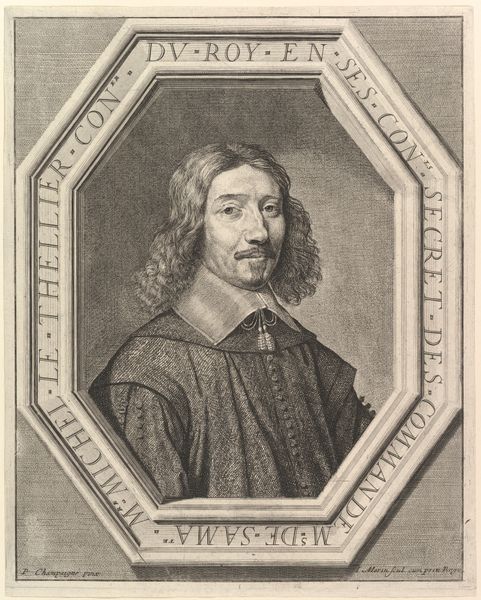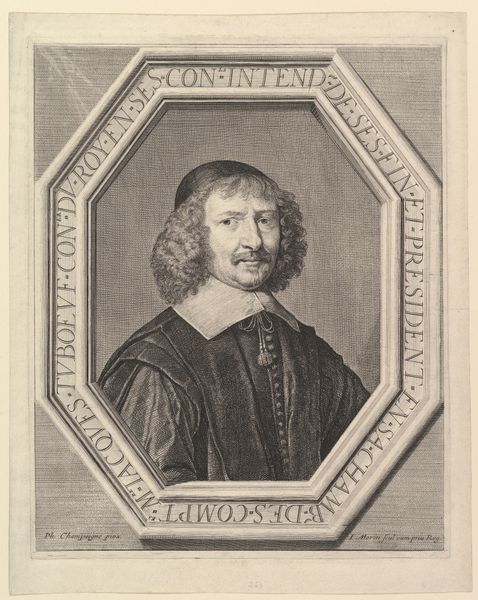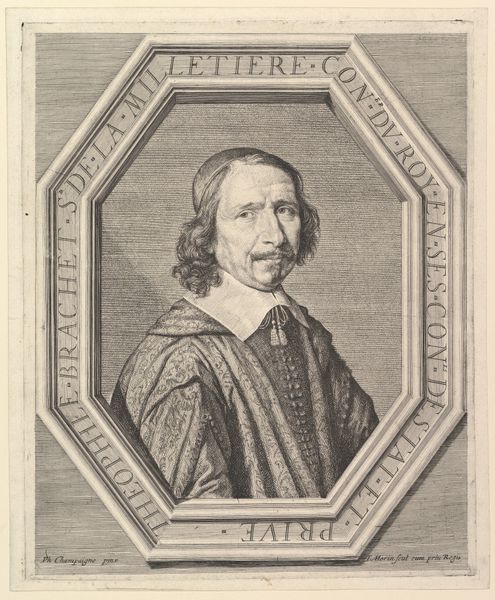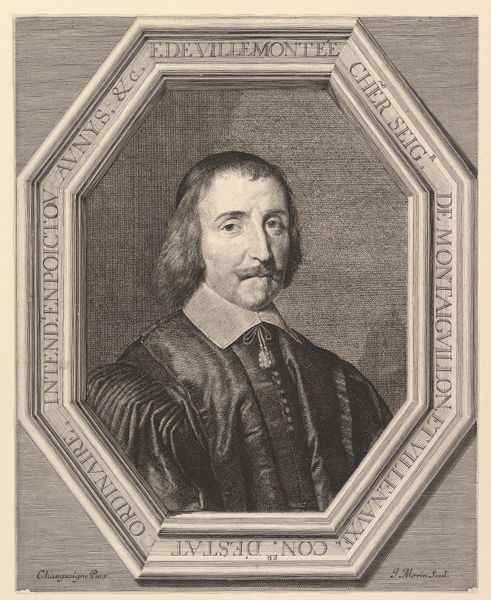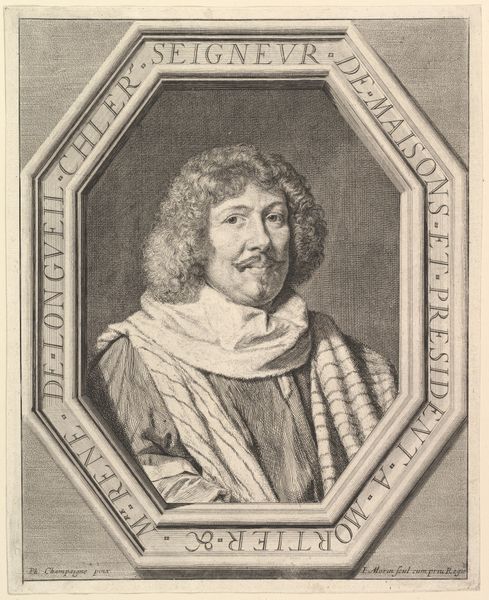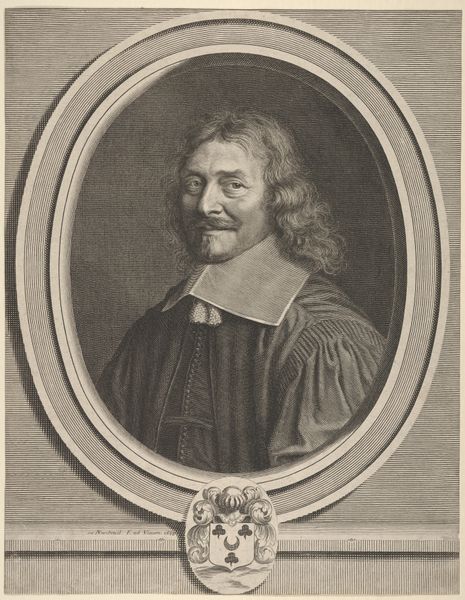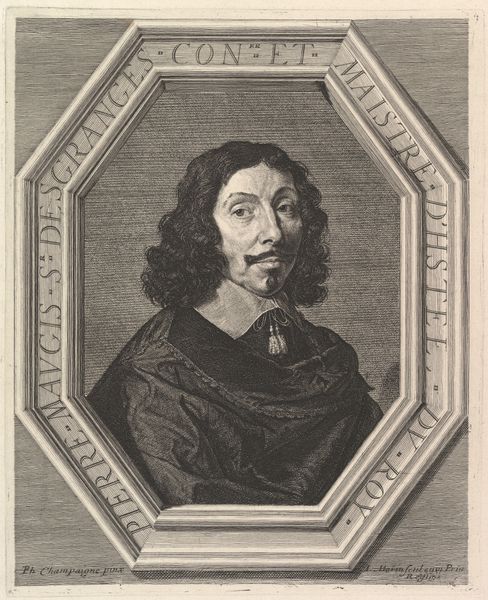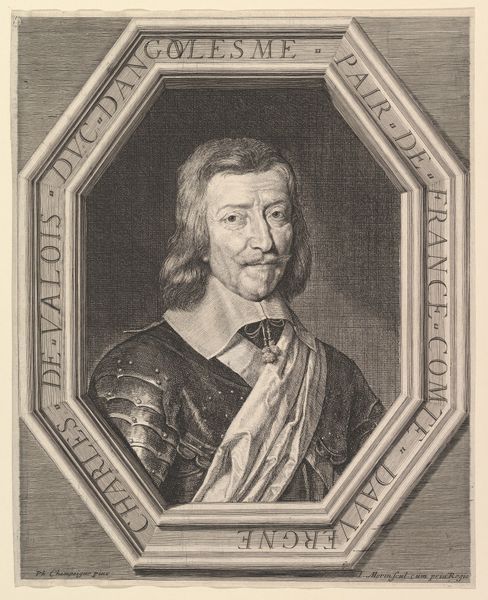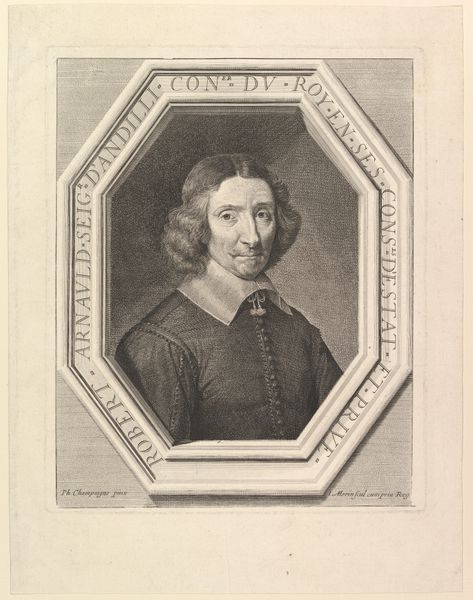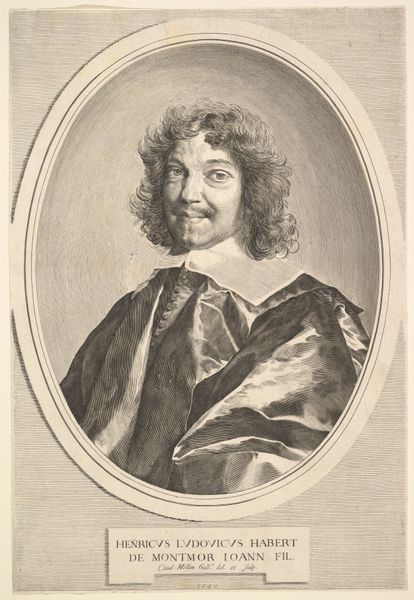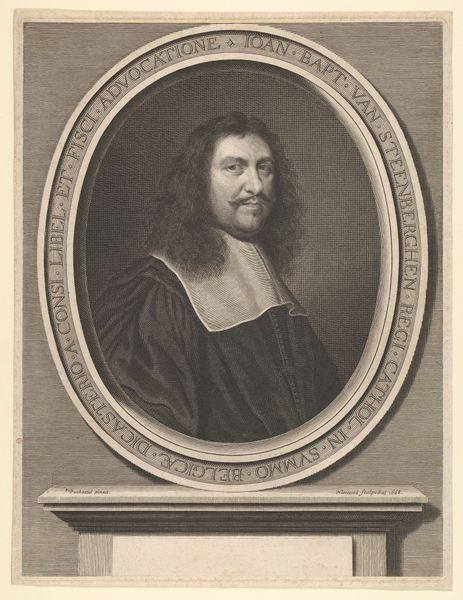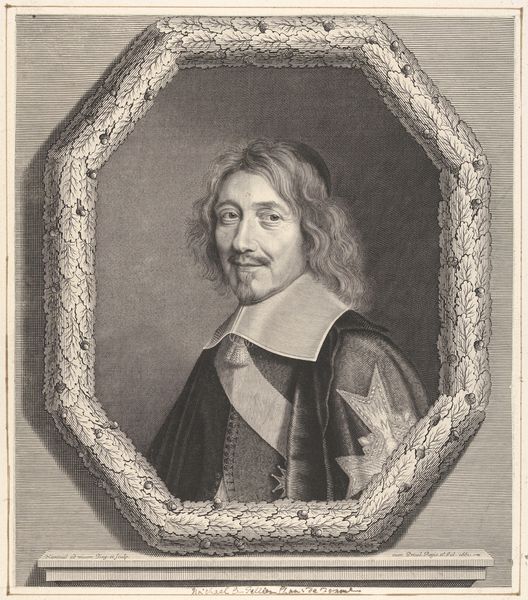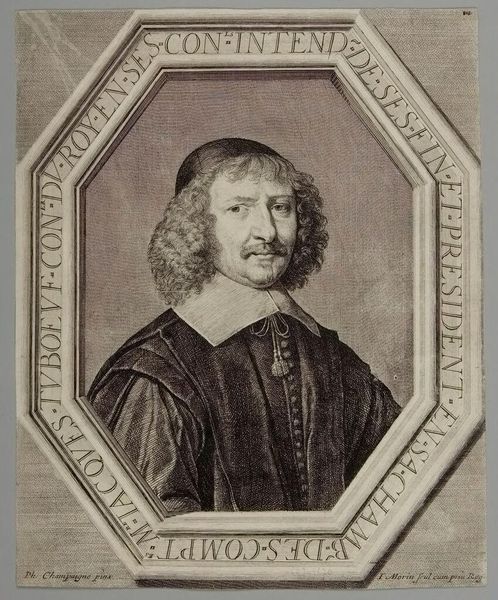
drawing, print, engraving
#
portrait
#
drawing
#
baroque
# print
#
engraving
Dimensions: image: 12 5/8 x 10 7/16 in. (32.1 x 26.5 cm)
Copyright: Public Domain
Curator: Before us, we have a print dating from around 1605 to 1650, created by Jean Morin. It depicts Jacques Le Mercier, and bears the title, “Jacques Le Mercier, architecte du roi." It’s currently held at the Metropolitan Museum of Art. Editor: The subject's somber, direct gaze immediately captures the eye. The whole piece has this weightiness. Is it the detail of the engraving or something in his expression? It certainly makes you think of power, but perhaps also the burdens that come with it. Curator: Yes, Morin’s engraving work gives the piece a kind of stoic elegance, but this isn’t accidental. Le Mercier was a key figure, and the portrait makes a strong claim for the power of architects in the French court. Note the inscription around the image, "Premier Architecte des Bâtiments du Roi"—first architect of the King's buildings. Editor: The architectural frame of text itself feels very deliberate. As a symbol it seems to assert a solid, foundational position for Le Mercier in the regency. I see echoes of Roman portraiture, the way leaders were portrayed within wreaths or architectural elements. Is this connection to antiquity intentional? Curator: Absolutely, during the Baroque period, artists and patrons often looked back to classical forms to legitimize power. Displaying Le Mercier, an architect, within an architectural border is a powerful statement about his significance to the monarchy and state-building at the time. These kinds of images played an important role in shaping perceptions of figures like Le Mercier within court society. Editor: So it’s more than a simple likeness, it's really an emblem of his importance, designed to embed the idea of the King's architect deeply into the visual culture of the era. You can see the cultural desire to create visual touchstones, anchoring positions within the power structure. Curator: Precisely. Viewing this piece encourages us to consider not just Le Mercier's physical appearance but his socio-political significance as rendered through careful, deliberate visual strategies. Editor: It's funny how a seemingly simple portrait can hold so many layers of social and cultural meaning, speaking volumes about the world it was created in. Curator: Exactly, by appreciating the symbolism employed and its historical context, we gain richer insight into the man and the mechanisms of power surrounding him.
Comments
No comments
Be the first to comment and join the conversation on the ultimate creative platform.
